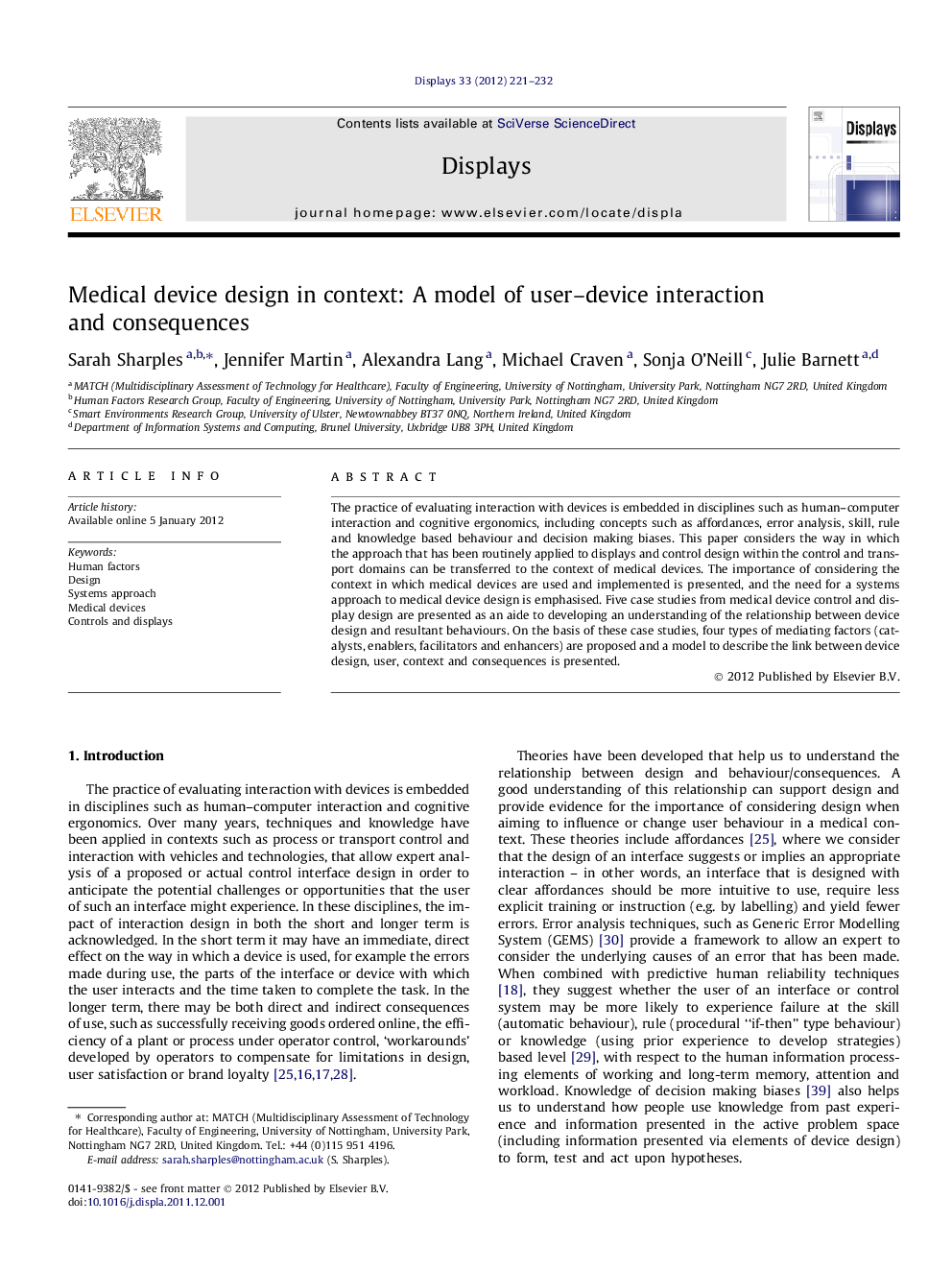| Article ID | Journal | Published Year | Pages | File Type |
|---|---|---|---|---|
| 540576 | Displays | 2012 | 12 Pages |
The practice of evaluating interaction with devices is embedded in disciplines such as human–computer interaction and cognitive ergonomics, including concepts such as affordances, error analysis, skill, rule and knowledge based behaviour and decision making biases. This paper considers the way in which the approach that has been routinely applied to displays and control design within the control and transport domains can be transferred to the context of medical devices. The importance of considering the context in which medical devices are used and implemented is presented, and the need for a systems approach to medical device design is emphasised. Five case studies from medical device control and display design are presented as an aide to developing an understanding of the relationship between device design and resultant behaviours. On the basis of these case studies, four types of mediating factors (catalysts, enablers, facilitators and enhancers) are proposed and a model to describe the link between device design, user, context and consequences is presented.
► The link between medical device interaction design and user consequences and behaviours is demonstrated. ► Five case studies of medical device design are described. ► A model to describe the relationship between device design and consequences is presented.
